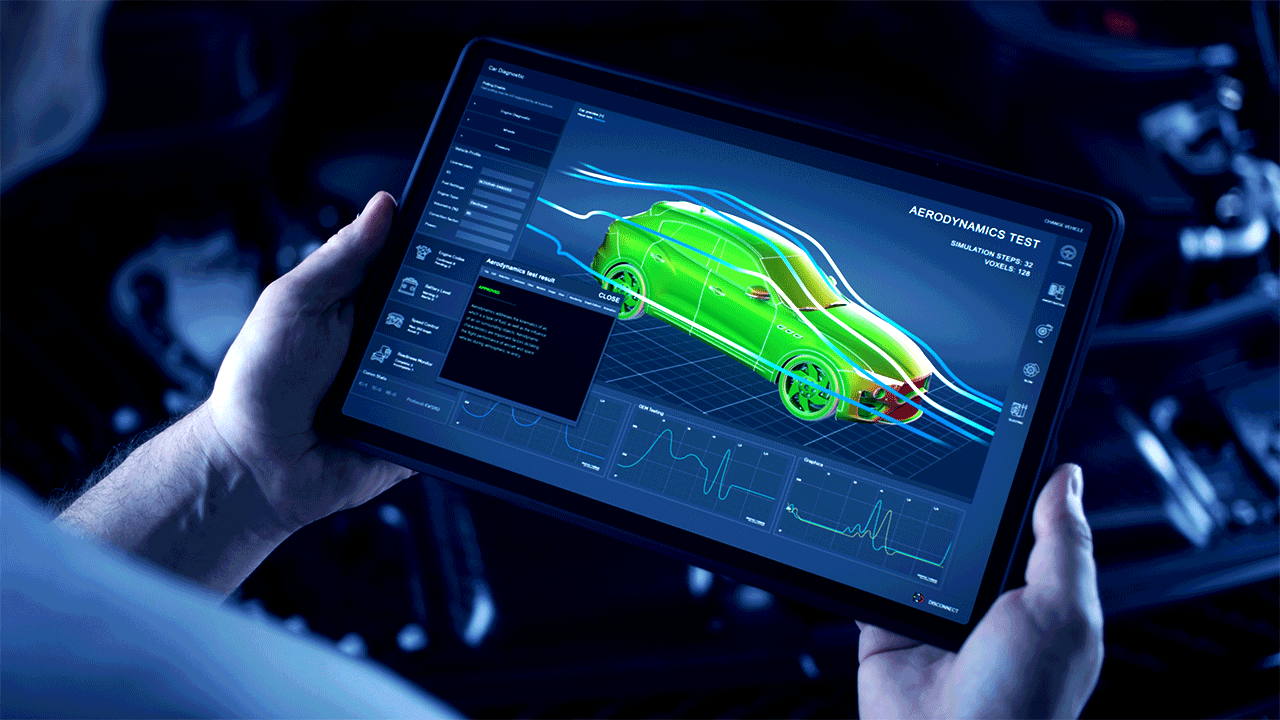1 min read
What is Master Data and How does it Impact the Automotive Industry?
What is Master Data and How Does it Impact the Automotive Industry? The term “data” can have an overall significance for our everyday wants and...
Unlock Engineering Insights: Explore Our Technical Articles Now!
Discover a Wealth of Knowledge – Browse Our eBooks, Whitepapers, and More!
Stay Informed and Inspired – View Our Webinars and Videos Today!
9 min read
 James Roberts
:
Jul 11, 2024 10:07:58 AM
James Roberts
:
Jul 11, 2024 10:07:58 AM

Master data serves a core critical function in engineering and advanced manufacturing throughout the modern industry, and nowhere is it more vital than the automotive sector. The advent of software-driven vehicles and the focus on embedded controller development (for example) has meant, along with other consequences, that usage and management of master data have become even more important to automotive engineers and software developers.
The usage of master data has, at this point, become deeply entwined with not only automotive development and manufacturing, but also sales, service, and operations. The automotive industry currently relies heavily on master data for high-value multi-discipline analytics, as well as Internet of Things (IoT) applications in manufacturing and solutions. One of the goals of this article is to show why the automotive industry relies so heavily on master data, thereby increasing awareness and understanding. Another goal is to show readers how learning the best use of master data can drive their organization’s overall operational efficiency, and visibility of core measures, to new levels, clearing the way for greater success.
Organizational Interaction
Master data, once established and a master data management system is implemented, is generally considered to be a very powerful tool for insight into an organization’s operation. Several people’s roles within an organization tend to interact heavily with master data.
Data analysts perform close readings of the master data and conclude the organization’s needs by examining the trends and data points they find such as:
While the focus of this article is centered mainly on the use of master data within automotive software applications, we intend to point out the aspects of master data that also apply to other industries. Perhaps surprisingly, small and medium manufacturers, or other organizations seeking ways to scale their operations up and reach their next-stage growth goals, also find that a greater understanding and proper leverage of their existing master data management scheme can be of great help. It’s also true that many successful organizations, both large and small, have not only large gaps in their data management systems, or nearly nonexistent data management – the classic situation of not knowing what they do not know, in other words.
Usage and management of master data in automotive development stems from a need to isolate and maintain, out of all the sources of data and information streaming in at both developers and their products, as a single source of truth. One advantage of the slower-changing nature of master data is that it reflects gradual trends rather than instantaneous updates. For an industry like automotive, where there is constant change and rapid updating and reorganization, this can seem counterintuitive. However, all the rapid developments and changes within the automotive world are not the results of capricious whims; the steady presence of complete, accurate, and consistent data is the basis for these rapid decisions, as much as the result of them.
Master data tends to move slower than either business data (like that related to sales) or operational engineering data (i.e., data that engineering systems produce) like sensor updates, telemetry or environmental data, system status (for example, information related to or used by real-time alerting systems). This is due to factors like the master data’s infrequent updates relative to other types, and the long lifecycle of some of the packets of data, meaning that it stays relevant and valid for long (sometimes extremely long) periods without the requirement for rapid or frequent modifications, updates, or change of any kind. The long lifecycle means that master data also remains very stable; its variability is low compared to faster-moving data types, and it has a lesser impact on day-to-day or more rapid operations. The slower pace of change, and the stability that provides, is what makes master data so valuable to organizations that require foundational, single-source-of-truth data to base design and development strategies. A few key points to consider:
Master data remains consistent throughout the life of the product development because it updates slowly and only contains data that is complete, relevant, and standardized. This includes component specifications and standards, making compatibility and interoperability between systems and subsystems possible and far easier to implement.
When selecting and processing master data, organizations should include only the data that is most relevant and up-to-date, to maintain the focus of the master data, leading to faster, more efficient, and more accurate decision-making.
Traceability and standardization: master data strategies generally include best traceability practices like revision management and change tracking. This, and the standard formatting of the data storage and management, helps maximize accountability, regulatory compliance, and efficient communication and integration of data between stakeholders during development and when products are in service.
Master data’s long lifecycle is related to the accuracy of its contents; it doesn’t require updates or corrections and so can stay accurate, providing precise component, specification, and performance information. Design, testing, and manufacturing processes rely on this accuracy.
The systems that contain, organize, and manage master data are usually designed to allow growth as the organization scales up in scope and size. The large volumes of data and support information required for developing modern automotive systems and software tend to only increase over time, and any data management systems they use must be able to scale with them.
In the context of automotive electronics and mechatronic development, master data tends to almost always be specifically product master data; this is what receives the primary focus of engineering departments or consulting organizations. Product master data is the foundational information that developers consider to be critical for processes inherent to the design, development, and production of vehicle systems and software. Data is generated at every step during the process of product design and creation, simulation, testing, and eventually production and even service, once the product is in the field. This data is mostly engineering product data, sometimes just called “product master,” and represents a great joining together of all the product and engineering data created during the multi-stage, often iterative or repetitive process of bringing a product off the design page and the marketplace.
Advanced Driver Assistance Systems (ADAS) development is one area in automotive systems development that benefits greatly from the use and management of master data. For one thing, the slow movement and update cycles of master data allow it to be subject to a great deal of analysis. The accuracy of master data remains very high throughout its usage cycle. Vehicle component specifications and parameters for safety testing performance must be accurate, especially in an industry where so many components and systems are crossing the threshold into the “safety critical” category.
For the identification of components and rapid access to the exact specifications and records related to each component, master data is invaluable when integrating cameras and sensors or other components like a radar module, into an ADAS system. All these components must work seamlessly and flawlessly together for the correct and successful implementation of the ADAS. The developers develop software and interfaces for each embedded control unit that require exact specifications for these sensors, including performance and compatibility data, as well as the interface standards, special requirements, and applicable regulatory requirements surrounding the use of each component. Developers should have a single source of truth at their fingertips for these specifications, as well as the requirements for managing the configuration of each device, component, and software tool related to its use. Access to this data, and its correct management and organization, leads to much more efficient and accurate system development, as well as much more efficient and safe operation of the entire ADAS and the vehicle as a whole – though it bears mentioning that the vehicle itself is now not really a “whole” but only a part of a massive data-defined infrastructure. The operation and architecture of those data systems are what keep the ADAS functioning and maintaining the safety of drivers, passengers, and those around them.
Advanced driver assistance technology (ADAS systems in all their permutations) and autonomous driving, as a more fully realized development milestone for those technologies, are some of the forces moving modern vehicles across the threshold into “safety product” territory. Why? Partly because these features and their advanced components promise so much improvement in the safe operation of our cars and trucks. By the mitigation of human error, ADAS features like blind-spot monitors, rear cross-traffic monitors, and parking assistance show that they are effective and desirable accident and injury-preventative measures. The master data maintained by national safety organizations, insurance corporations, and the legal teams of OEMs and suppliers, among other national safety stakeholders, is slowly aggregating to corroborate this assertion.
Master data provides a configuration management architecture for the development and production of most if not all, automotive software and systems. These systems and software are not always completely compatible; some configuration must always be performed to allow the seamless flow of information during development and testing. The data management structure helps manage not only baseline system configurations but also the changes made to them during the development process. Management of master data then must include version control information about the software and related firmware, as well as hardware and software configurations. Master data management also helps maintain data consistency by providing a single, authoritative source for the critical data used in the development process, like vehicle specifications, parts information, customer data, and supplier details. In addition to this, interoperability configurations and any documentation of compatibility matrix, both for internal use and for good record keeping per applicable regulations and standards, must be included. Besides streamlining the development workflow with a standard, centralized storage, and management construction, this helps guarantee traceability and compliance to standards, many of which cross paths during development and production processes, and which might require similar actions or records of components or software tools.
Beyond the need to maintain records of configuration, compatibilities of various systems, and the identifying information for all components used during development and integration, master data is used during testing, verification, and validation of newly developed (or improved) hardware and software. The criteria for verification and validation of a developed product, as well as test cases, procedures, expected outcomes, and benchmarks for the performance of the completely validated component, are all stored within master data. This information also goes to the traceability and compliance to standards and regulations like ISO, SAE, IEC, and PAS that master data exists to ensure, and without which most organizations would be unable to continue development, simply due to the quantity and complexity of interrelated data that must be stored, vetted, analyzed, and referenced during development, testing, and production processes in the modern automotive industry.
Within the discipline of providing stewardship of an organization’s master data, several challenges are aced, including integrating a master data management architecture that will be effective and scalable, onto legacy systems that an organization may not want to replace due to cost, familiarity, or proprietary protocols and third-party software compatibilities which would be difficult to migrate to newer systems. However, legacy systems can sometimes present significant technical and organizational barriers to the integration of modern master data management software. Aside from these barriers, master data can sometimes be subject to real-time processing needs which can be even more challenging when also interacting with legacy systems that can’t quite keep up with the demand). Even with current technology, master data can be challenging to process in real time due to the sheer volume and variety of the data and the information it presents. Master data is its own complex ecosystem of interconnected security, compliance, and organizational requirements. Managing it alone, with sufficiently robust attention to consistency and accuracy, requires effort due to the sheer quantity of information it contains from dissimilar or disparate sources, even in a relatively small organization. To attempt processing, sorting, and re-integrating it to another system, and in real-time, is another challenge altogether.
Master data management is a holistic approach to the “discipline of stewardship” of master data, allowing an organization’s master data to not only be defined, stored, and used effectively but also made available to users and their varied (possibly legacy) systems in a way that maximizes its effectiveness. Master data management can include not only technology and processes but also people. This management approach uses robust data governance frameworks, leveraging advanced analytics and AI technologies, and fosters collaboration between stakeholders. Users of master data can overcome the challenges using master data with good quality master data management systems and guidance to harness the data’s full potential for their products and processes.
If master data provides developers with a configuration management framework, how do they best utilize it? Automotive systems have long lifecycles spanning several years, during which the software and hardware components in use are continuously evolving around them. Effective master data usage and management requires, for one thing, lifecycle management capabilities robust enough to continue tracking changes, version control, and software dependencies, across the entire range of products. This includes managing software updates, patches, and configurations while ensuring backward compatibility and system reliability. Besides this, developers and their organizations need to keep an eye on the regulatory landscape as regulatory agencies develop new or updated requirements in response to changes within the industry or legislative action. The regulations and standards governing vehicle safety, emissions, cybersecurity, and data privacy are vast and varied. Master data initiatives must ensure compliance with these regulations, which may sometimes differ by region or jurisdiction. This involves implementing robust data governance practices, audit trails, and compliance monitoring mechanisms.
The automotive industry has always been an arena of change, development, and innovation. Sometimes changes snowball into trends and cannot be fully determined even by the people who started them. Vehicles now, our modern software-defined vehicles (SDVs), are beginning to cross over a threshold from a “pure consumer” product to, in some ways, being perceived as an actual safety product. This re-definition of the role and purpose of vehicles then reiterates and alters the public’s perception of the transportation they choose, and what features they find most desirable. Master data has historically been used in liability determinations, but as vehicles cross the threshold into “safety product,” as greater percentages of the components and systems within a software-defined vehicle come to be seen – and defined – as safety-critical features, the complexity of that data and its usage continues to greatly increase, and master data’s usage in overall safety and legality is now far beyond only liability calculations.
This article has discussed master data’s extremely beneficial qualities and has covered:
We hope you enjoy this article, and that it has informed you to some degree about master data and its critical use in automotive and manufacturing. Contact LHP today to learn more about solving your master data complexities.

1 min read
What is Master Data and How Does it Impact the Automotive Industry? The term “data” can have an overall significance for our everyday wants and...

How to Get Your Organization Started with Master Data Master data has a critical role to play for your organization when guaranteeing...

How to Build Master Data Systems: Architecture, Trade-offs, and Constraints Master data has a critical role to play when guaranteeing...